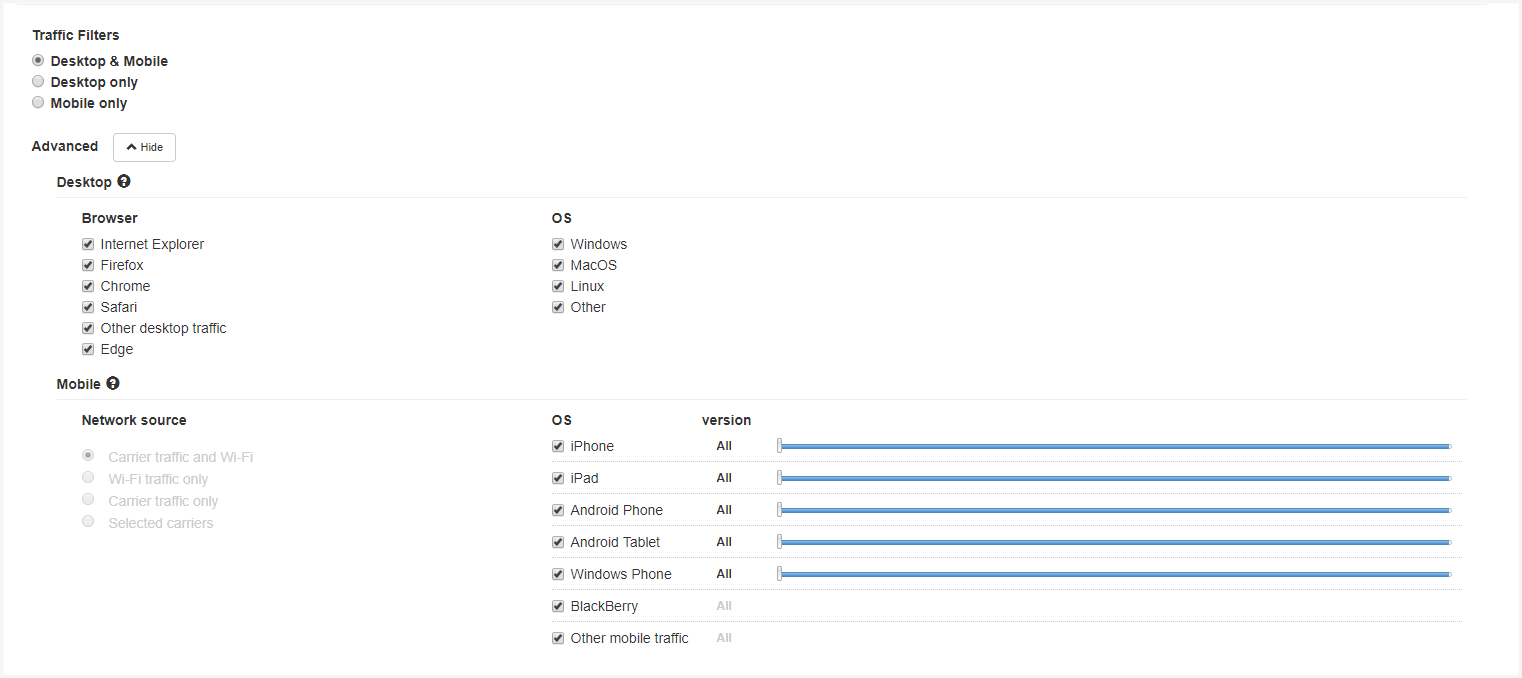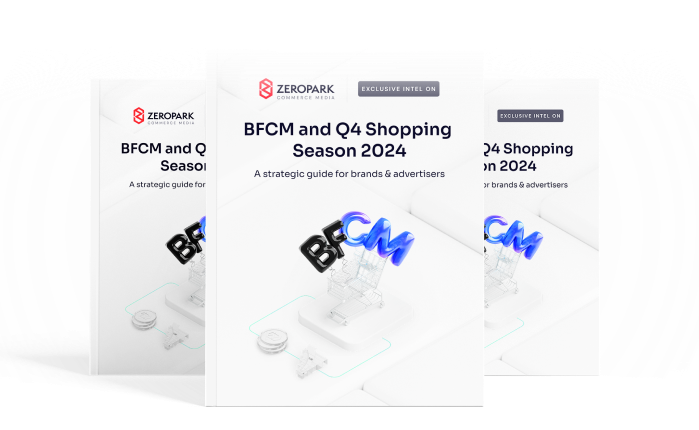Adjusted frequency capping can make your affiliate marketing campaigns great again. It’s a proven opportunity to get more traffic and increase your profits. Would you like to know how to do it? Well, you have come to the right place!
There’s no need to introduce Bruce Lee to anyone. He was a well-known martial artist, actor, director, and philosopher. What’s interesting, some of his quotations perfectly describe our business, although he had never heard about affiliate marketing.
Adapt what is useful, reject what is useless, and add what is specifically your own.
Those words have a lot in common with the everyday struggle with campaigns, optimization, and targeting stuff, right? I promise I’ll come back to Bruce the Affiliate later. Unlike Chuck Norris and that sweet little kitten – we have plenty of time… left.

Targeting and optimization are keys to success
Picture this: You’ve set up a campaign, funds are there, ads are visible to a great number of people but the results are poor. Why is that? Well, first of all, despite what you may often hear, affiliate marketing is not the fastest way on the planet to become a billionaire.
Can you earn a lot in the business? Yes. Is it simple? No way! It’s a 24/7 job. If you’re not a newbie, you know how much time, creativity, and cups of coffee in the middle of the night it takes to understand the basics and start making decent money.
Profitable campaigns from day one – that’s a great scenario but an extremely rare one. It more often requires hours of testing, smart targeting, and optimizing one’s efforts. There are plenty of tools that may make your work easier.
Best practices for campaign optimization [cheat sheet]
Picking an offer with potential is never easy. That’s why you should learn and research before diving into affiliate marketing. Check out the best affiliate marketing communities, courses and learn from the experts.
✔︎ Testing is the key. One offer with one ad will not produce enough data. Testing many variables is the only way to discovering a goldmine.
✔︎ Creative messaging plays an important role in getting your message through to the right audience.
✔︎ Don’t forget about creative rotation. Ad fatigue is one of the most common reasons for CTR drop.
✔︎ Remember about important business metrics such as Conversion Rate and Click-through rate – ROI isn’t everything.
✔︎ For most accurate results use third-party measurement partners (tracking solutions).
✔︎ Use different angles to appeal to different user interests.
In this article, however, we will introduce you to frequency capping, one of the filters available in the Zeropark Dashboard.
What filtering is & how you can use it to improve different user journey stages
Imagine you want to advertise a dating app for love seekers living in Belgium. Oh, it works on Android and is appropriate for people of any age. Should you show your ad to everyone? Well, not exactly. You have to target your audience first. And while some of that will take a trial and error approach, there are also some steps you can take before spending money (or too much money).
This is what filtering options are for. To profile your target you should use traffic filters, which allow you to target your audience by the desktop/mobile operating systems, browsers, and carrier.

As you can see, there are plenty of options to choose from to narrow your targeting to the desired audience for this specific dating app. You can also easily select a dedicated country and region/city as well. Another filter will help you to select non-adult traffic.
You have selected your audience. Now it’s time to get to know the user interest and take care of their expectations and experience. And this is what you need frequency capping for.
Make your audience happy with the frequency cap
Setting the frequency filter allows you to control how often your ad will be displayed to the same visitor (one unique user).
Why is it so important? Imagine a lazy Sunday afternoon. You’re just about to start reading a book you really like. It’s all set – you put your smartphone in airplane mode and a cup of tea/glass of wine is at your fingertips. All you have to do is to relax and dive into the world of your favorite characters.
Sounds great? Not really, as all you can hear is the buzzing of a mosquito flying somewhere close to your ears. At first, you just try to wave it away. But after a couple of minutes, it’s still there. Looking at you and waiting to interrupt once you start reading.
There are some words that come to your mind to describe that mosquito. One we can quote here is intrusive. Intrusive like an advertisement that’s bombarding your screen every time you switch it on. Even if you have designed a great campaign you don’t want to be like a mosquito for your audience.
Make them happy instead of mad and try frequency filters.
Zeropark frequency cap recommendations
The optimal frequency cap will be different for digital advertisers with different goals. If you have an untested display campaign then going for a high-frequency cap will quickly tell you if the particular ad appeals to your target audience.
If your ad campaign has the purpose of raising brand awareness, the number of impressions displayed in a short time period helps to ensure that your ad doesn’t get lost in the multitude of online advertising strategies. The more a person sees your ad, the more they’re going to remember your brand.
Higher frequency capping can also be used for tested campaigns with proven results. If your campaign is not receiving enough traffic, try setting your ad frequency to 1/12 or 1/6.
With POP traffic and DOMAIN traffic, impression capping works slightly differently. After all, it’s not the user’s phone blowing up with the same message every 30 minutes, it’s how often your display campaigns appear as popups and redirects. In that case, tested campaigns in need of volume can go as often as 1 ad display every 30 minutes.
How to setup frequency capping in the Zeropark dashboard
As you already know, in the Zeropark Dashboard you can find many filtering options that help you target specific users. To set up filters, you need to choose a traffic type first and move to the targeting options.
Remember that frequency filters options are different for different types of traffic.
Pop/Domain:

Just pick one of the available options and decide how often your ad will be displayed to the same single user. Like any other filter, you have to use this one wisely. The best approach is to conduct A/B testing and figure out what works best for your campaign/vertical.
Spend more to earn more with lenient frequency capping
You can use a frequency filter as you want to make your audience happy, avoid banner blindness, and throwing your money away on someone who’s not interacting with your ads.
Fair enough. But you have to keep in mind that setting a frequency cap higher than one hour (pop/domain traffic) will limit the volume of available traffic. And you wouldn’t want your competition to step in and snatch a potential conversion that was right before your eyes, would you?
It means you need to find a balance for your performance between upsetting your audience and losing your traffic. Spend more to win more traffic (and thus – conversions) at the same time remember about the experience of your users.
The benefits of frequency caps
Here are some of the possible benefits of using frequency capping in an optimal way:
- it may give you a better CTR;
- minimize the banner blindness effect;
- reduce campaign costs;
- … and increase ROI.
Setting up a frequency filter is a small step in creating a new campaign but on the other hand, it may be a significant one in targeting and optimizing your efforts.
I promised you more affiliate-related quotes from Bruce and here they are!
The successful warrior is the average man, with laser-like focus.

Don’t take anything for granted, conduct as much A/B testing as possible, find what works best for your campaigns/verticals and increase your profits with lower frequency capping. Good luck!
Ready to Be the Bruce Lee of Affiliate Marketing?
Sign up to Zeropark Now!





